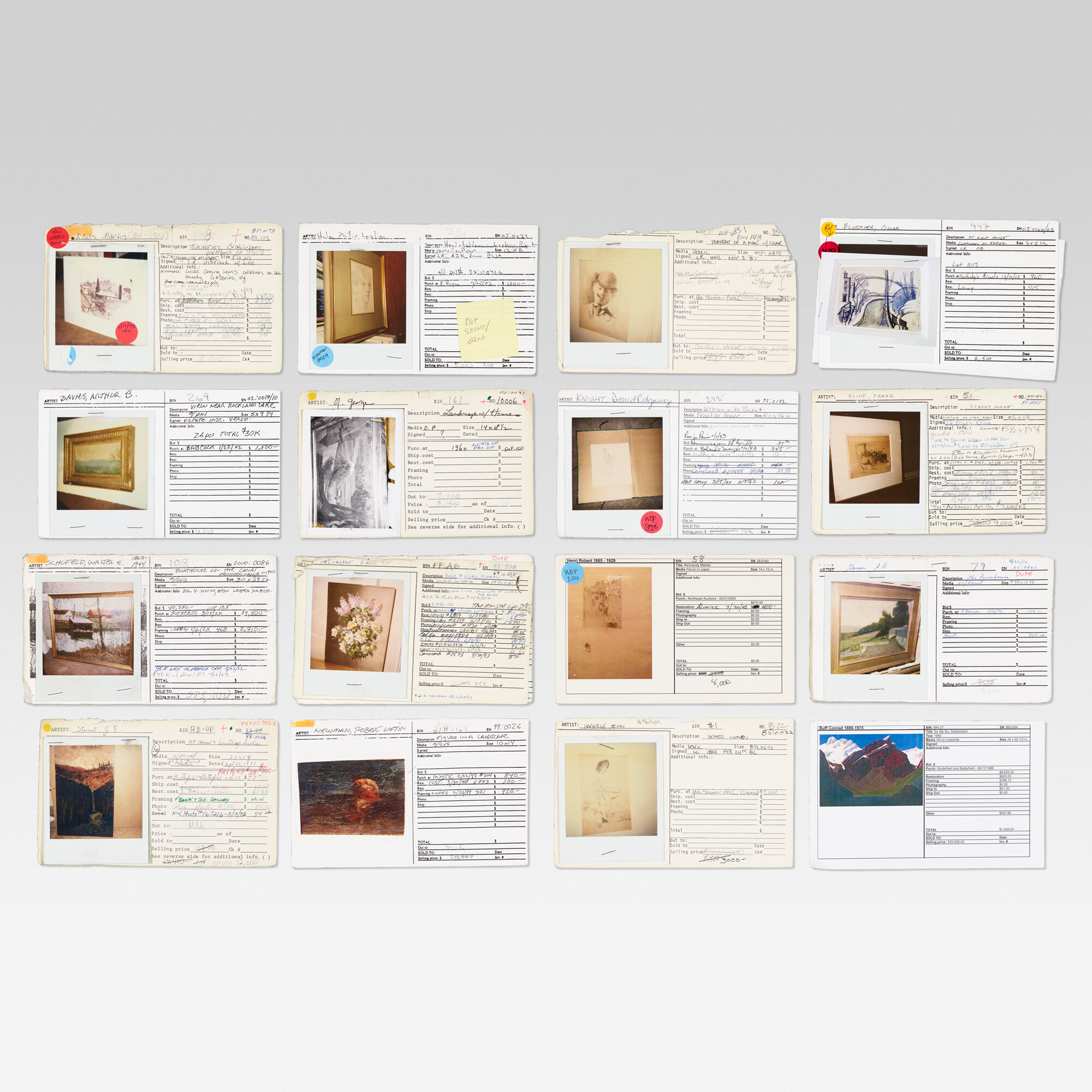491
491
mixed media on paper 39¾ h × 25¾ w in (101 × 65 cm)
estimate: $2,000–3,000
result: $375
follow artist
This work will ship from Rago in Lambertville, New Jersey.
For more than fifty years, Spanierman Gallery cultivated a reputation as one of the country’s preeminent galleries dedicated to American Art. Founded by Ira Spanierman in 1961, the gallery initially offered a wide selection of material, including silver, arms and armor, Old Master, European and American art. Over time, Spanierman chose to focus exclusively on American art, a move that would establish the gallery as a tour-de-force in the field. Well-known for his outstanding ‘eye’ and dedication to connoisseurship, Spanierman was trusted by institutions and private collectors alike. The gallery was known to have sold to hundreds of museums across the United States and abroad while fostering the development of some of the country’s most prestigious private collections.
In addition to its reputation as a dealer, Spanierman Gallery was esteemed in the industry for its dedication and support of art scholarship. As a young man starting off in the business, Ira Spanierman recalled researching and identifying paintings through tedious research at the Frick Art Reference Library. These hours of study left an indelible mark on Spanierman who would go on to publish catalogue raisonnés for artists such as Theodore Robinson, John Henry Twachtman, Willard Metcalf, and co-sponsor the catalogue on the work of Winslow Homer.
When Spanierman Gallery closed in 2014 an impressive inventory remained. We are pleased to offer a selection of these works from the estates acquired by the gallery including those of Dora Maar, Solomon Ethe, Vaclav Vytlacil, John F. Carlson, Joseph Amar, James and Myron Lechay, Martha Walter, Mercedes Matter, Lamar Briggs, Sumiye Okoshi and Robert Emmett Owen.


Joseph Amar 1954–2001
Joseph Amar was born in Casablanca in 1954. The family, which included his father, a Sephardic Jew and his mother who was of Spanish lineage, remained in Morocco until 1957 when they and many others decided to immigrate to Toronto in order to flee the escalating Arab conflict. Though the family had limited financial resources once they reached Canada, Amar grew up immersed in art and was awarded a scholarship to Ontario College of Art, where he studied briefly before leaving to focus on his work within his own studio.
Amar’s formative years coincided with the emergence of the Pop Art, Hard Edge and Minimalist movements but his fascination remained with the abstract expressionists and materials-based movements such as arte povera and pintura matérica. He was heavily influenced by the art of Antoni Tàpies and Alberto Burri as well as the ready-made’s of Marcel Duchamp and the combine paintings of Robert Rauschenberg for their treatment of non-traditional materials and assemblage techniques. Amar incorporated their use of found objects into his own paintings and allowed the materials to determine the course of the composition, communicating with his expressive brushstrokes in a poetic give and take, creating works that extended off the canvas into the viewer’s space.
By 1979, Amar had participated in well-received exhibitions in Toronto but he understood that the future of his career lay in New York. That year, though he continued to return to Canada to teach, he moved his studio and his family to Williamsburg, Brooklyn where he reveled in the daily experiences and most importantly, the material available to him on the streets in his neighborhood. He continued to push his compositions, making them ever larger, heavier and more complicated using combinations of rope, wood, concrete, bed-sheets and burlap but in a way that created a unique dialog with the minimalist movement that had taken hold.
In 1981, Amar was included in a group exhibition at OK Harris Gallery and within four years, he gained representation by the Bess Cutler Gallery, which at the time, was the largest gallery in SoHo. While there, he took part in the landmark 1987 Dusseldorf show, Similia/Dissimilia, organized by the renowned curator, Rainer Crone, alongside influential artists such as Anish Kapoor and Peter Halley. The show traveled to Columbia University, Leo Castelli Gallery and Sonnabend Gallery in New York, exposing Amar’s work to a wide audience. Throughout the rest of the decade, he would participate in many subsequent shows nationwide while his works began to appear in the permanent collections of the Guggenheim and the Carnegie Institute as well the private collections of celebrities such as Bianca Jagger, Elton John and Yoko Ono.
Amar’s star was quickly rising but tragically, a drunk driver collided with Amar’s car in 1991, killing his wife instantly and severely injuring him and his daughter. His daughter eventually made a full recovery but sadly, Amar remained paralyzed from the neck down, speaking with the help of a voice synthesizer and with limited use of his right hand. With his career coming to an abrupt end, his works began to move into storage facilities, largely forgotten. Amar lived another 10 years before succumbing to his injuries in 2001. Today, there has been a rediscovery of his works and Amar is once again being celebrated for his dynamic compositions and progressive use of materials.